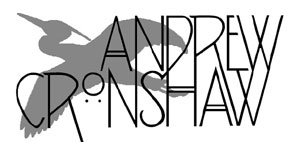
- Andrew Cronshaw website -
- Andrew Cronshaw MySpace -
- Cloud Valley Music website -
- Andrew Cronshaw website -
- Andrew Cronshaw MySpace -
- Back to Reviews Introduction page -
Written in fRoots issue 217, 2001
BOOK (+ CD)
ALBERT B. LORD
The Singer Of Tales - Second Edition, edited by Stephen Mitchell & Gregory Nagy
Harvard University Press ISBN 0-674-00283-0
The Singer Of Tales, first published in 1960, has come to be regarded as
a classic of research into folk-ballad creation and transmission. The research
project was begun in the 1930s by Harvard academic Milman Parry as part of his
investigation of nature of composition of Homer’s Iliad and Odyssey, his
hypothesis being that they were the product of an oral tradition older than
written literature.
The plan was to go to somewhere where long epic
ballads were still being performed by illiterate singers. Unable to get a visa
for his regions of first choice, Kirghiz territory and other parts of Soviet
Central Asia, Parry diverted his researches to the South Slavic epic singers,
the guslars, in the region of southern Serbia, Montenegro, Bosnia and
Hercegovina. In their main fifteen-month collecting visit in 1934-5 he
and his former student Albert Lord, with a number of local assistants, made
written transcriptions of over 12,500 texts, and 3,500 aluminium-disc recordings
- more than half a ton of discs - using two bulky recorders linked so as to
record their long songs without breaks. Parry died suddenly three months after
that trip, and the work was continued by Lord, who made further field trips in
the 1950s and wrote the book.
They recorded both Christian and Muslim singers;
it seems that their songs were essentially the same in form and language, only
differing in the ethnic identity of hero and villain. Indeed the editors of this
new edition of Lord’s book refer to the significance of these epics in national
identity, and in this connection they mention an influential four-volume
collection of epics published in the 18th century by ethnographer Vuc Karadžić
which particularly featured ballads associated with the 1389 Battle of Kosovo
between Serbs and Turks. (And what were, er, England’s St. George and the
Turkish Knight doing around then?)
Much of the substance of the book concerns the lyrics rather than the tunes, but
the musical character of the songs is mostly a rising and falling style of
recitative based on melodic framework in a variety of rhythmic patterns. They
were sung solo by usually paid singers, often accompanying themselves on gusle,
a buzzing one-stringed, skin-soundboard fiddle, or on the two-stringed plucked
tambura. (Lord and Parry paid too, each singer’s fee being proportional to local
reputation, and, as custom also demanded, provided wine, coffee, rakija and
cigarettes.)
Such guslars would be employed for celebrations at village houses or, commonly,
as the entertainment for men during long nights at inns in market towns, or
seasonally to sing thirty epics during the thirty days of Ramadan. Listeners
would drift in and out in the course of the song, so the singer would need to
adjust it accordingly and make sure it ended while there was still an audience.
It’s an important part of the Parry and Lord studies that the singers were shown
to be not rote-learning deliverers of memorised songs but composers combining
and interweaving items from a mental gallery of phrases and story motifs.
The book is academic, written in formal, footnoted style, but determined plunges
into it emerge with handfuls of food for thought as to the nature of folk
composition and transmission. As to whether it answers the question of how the
Iliad and Odyssey came to be written down - well, not really, no-one really
knows that now, but Lord ventures an informed hypothesis, and along the way his
and Parry’s work, in linking the revered classics of Homeric and medieval epic
with oral ballad-making and treating the singers with non rose-tinted respect,
manoeuvred some bridge-girders across the still-existent gap between “high
classical” and “folk” art.
Limited-readership academic books such as this tend to be expensive, but
surprisingly this hefty 300-page paperback plus a CD containing fragments of
recordings, transcriptions, conversations and photos from the field trips and a
short film of one of the informants costs just a CD-matching £12.50.
© 2001 Andrew Cronshaw
You're welcome to quote from reviews on this site, but please credit the writer
and fRoots.
Links:
fRoots - The feature and
review-packed UK-based monthly world roots music magazine in which these reviews
were published, and by whose permission they're reproduced here.
It's not practical to give, and keep up to date,
current contact details and sales sources for all the artists and labels in
these reviews, but try Googling for them, and where possible buy direct from the
artists.
CDRoots.com in the USA, run by
Cliff Furnald, is a reliable and independent online retail source, with reviews,
of many of the CDs in these reviews; it's connected to his excellent online magazine
Rootsworld.com
For more reviews click on the regions below
NORDIC
BALTIC
IBERIA (& islands)
CENTRAL & EASTERN EUROPE, & CAUCASUS
OTHER EUROPEAN AMERICAS OTHER, AND WORLD IN GENERAL
- Back to Reviews Introduction page -